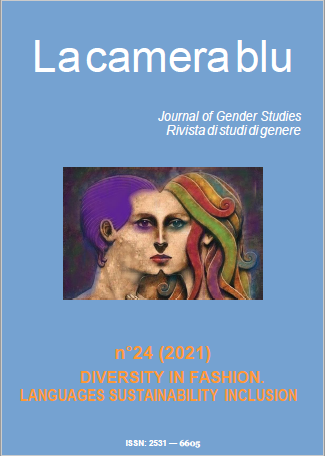Perspectives on Diversity and Inclusion in the Fashion Industry
DOI:
https://doi.org/10.6093/1827-9198/8881Keywords:
inclusion, diversity, binary thinking, intersectionality, gender-inclusive, inclusive fashionAbstract
Despite an increase in awareness about topics like diversity and inclusion in the fashion industry, many organizations managing fashion brands still confuse these two terms; they use them interchangeably or only focusing on diversity marketing, forgetting to implement inclusive policies within the organization before waving the flag of inclusion in the media. This article addresses historical, social, communicational and managerial perspectives to discuss the challenges that organizations face in regards to diversity and inclusion in the fashion industry. The aim of this article is to define and clarify key concepts around diversity and inclusion, and to provide examples of how fashion brands are integrating them into different aspects of their activities; including company culture, product development, media representation, and customer relations. Regarding diversity, the focus is mainly on race, gender expression, physical abilities, age and body types. The article starts by addressing how the fashion industry was historically based on exclusion and privilege, having a social influence since its origins, operating from a basic human need for belonging, and establishing normative behaviours. Over the last years, diversity has taken centre stage, but there is much work to be done. Although year 2018 was considered “the year of diversity” by fashion media, looking at the quantitative analyses of plus-size, multiracial, fifty-plus or transgender identity representation between 2018 and 2021, we see that numbers do not support this claim. What is missing is a radical mindset shift from a binary perspective to a spectrum-based understanding. People tend to think in terms of binary opposites that are mutually exclusive, whereas an inclusive perspective sees no borders but a fluid transition that connects apparent opposites. Another key concept included in this paper is intersectionality, which considers how different aspects of social discrimination overlap each other. After the historical and sociological revision of the fashion industry and elaborating on the key concepts relevant to the discussion, these are applied to the analysis of concrete brands, products and campaigns within the industry. The scope covers four examples of best practices in ready-to-wear brands, social entrepreneurship and bottom-up activism initiated by underrepresented consumers asking for visibility. Special attention is placed on brands and how their products are opening a new stage for inclusion of diverse body types and non-conforming gender identities. Finally, the focus shifts to the business case for inclusion, covering the systemic and structural changes needed inside an organization in order to create a culture of inclusion, and how this will lead to an increased feeling of belonging of employees, resulting in better performance and enhanced profitability.
Keywords: inclusion, diversity, binary thinking, intersectionality, gender-inclusive, inclusive fashion
Downloads
Downloads
Published
How to Cite
Issue
Section
License
La camera blu is an open access, online publication, with licence CCPL Creative Commons Attribution 3.0 Unported


